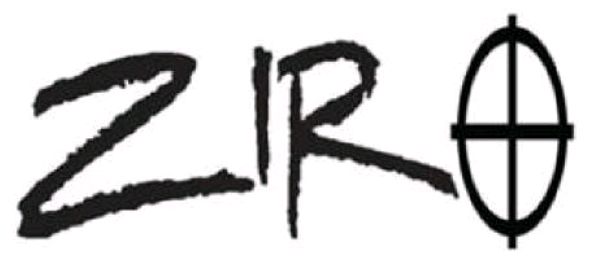In Zero v European Union Intellectual Property Office (EUIPO) (Case T-106/16), the General Court, contrary to the Fourth Board of Appeal of the EUIPO, has ruled that there was a likelihood of confusion between the figurative mark ZIRO and an earlier EU figurative mark ZERO for essentially identical goods.
The applicant applied to register the figurative mark ZIRO in Classes 14 and 25:

The opponent argued that there was a likelihood of confusion under Article 8(1)(b) of Regulation 207/2009 between the applicant's mark and its earlier EU figurative mark ZERO, also registered in Classes 14 and 25:

The opposition was rejected by the Opposition Division of the EUIPO and its decision was upheld by the Board of Appeal.
The General Court did not dispute the board's assessment of the relevant public; this was the public at large throughout the European Union, the level of attention of which varied from average (in relation to everyday consumer goods, such as clothing) to above average (in relation to the Class 14 goods, such as jewellery). Nor did it dispute the board's conclusion that the goods were identical (except the precious metals and alloys in the applicant's specification). The key focus of the court's judgment was on the board's assessment of the similarity of the marks.
With regard to visual similarity, the court disagreed with the board's finding that the marks were visually dissimilar. Although the opponent's mark had a certain stylisation, the verbal element, represented in lower¬case letters, was easily recognisable. With regard to the applicant's mark, as the first three elements were letters, the relevant public would consider the fourth element as also being a letter and would consequently see the mark as being a word. The court explained that, although the stylistic difference of the last letter would not go unnoticed (ie, the horizontal and vertical lines within the circle giving the impression of crosshairs), it could not counteract the impression of coherence of the various elements. In the overall context of the mark, the circle contained in the fourth element could be understood only as the letter 'o'.
The court referred to the proposition (set out in earlier case-law) that, where a mark was composed of verbal and figurative elements, the former were, in principle, more distinctive - the average consumer would more readily refer to the goods by quoting their name than by describing their figurative element. In this case, the verbal elements of the marks were 'zero' and 'ziro'; they had the same number of letters, and only their second letter differed. The verbal elements of the marks were therefore highly similar. However, in view of certain differences, such as the different fonts and the stylised 'o' of the applicant's mark, the court concluded that they had average visual similarity.
With regard to phonetic similarity, the court disagreed with the board's finding that the marks were phonetically dissimilar. As it had already discussed in relation to visual similarity, the public would recognise the verbal element 'ziro' in the applicant's mark. The court concluded that, although the marks were not phonetically identical due to the difference in pronunciation of the first vowel, they were phonetically similar to an average degree, at least for the English-speaking relevant public.
As to conceptual similarity, here the court did not dispute the board's assessment and agreed that, in the absence of a clear and specific meaning of the verbal element 'ziro', the marks were not conceptually similar.
The board had concluded that there was no likelihood of confusion between the marks, which was based on its finding that they had, at most, a low degree of similarity. The court ruled that this assessment was erroneous as it had failed to take account of the correct degree of similarity between the marks, in particular their visual and phonetic similarity. Consequently, it held that the board's decision should be annulled.
The General Court's decision shows that it can be worthwhile (subject to time and budget constraints) appealing decisions of the EUIPO's opposition divisions and boards of appeal when an applicant or opponent does not get the first time its desired outcome. One of the key differences between the court's decision and that of the board was how it viewed the last element of the applicant's mark, concluding that the public would see it as the letter 'o'.
In terms of choosing a mark and comparing it to a competitor's mark, this decision demonstrates how the overall context of the mark is important. It is also a useful reminder of the general proposition that, where a mark is composed of verbal and figurative elements, the former are in principle more distinctive - the average consumer will more readily refer to products by quoting their name than by describing their figurative element.
This article first appeared on WTR Daily, part of World Trademark Review, in March 2017. For further information, please go to www.worldtrademarkreview.com.
The content of this article is intended to provide a general guide to the subject matter. Specialist advice should be sought about your specific circumstances.


